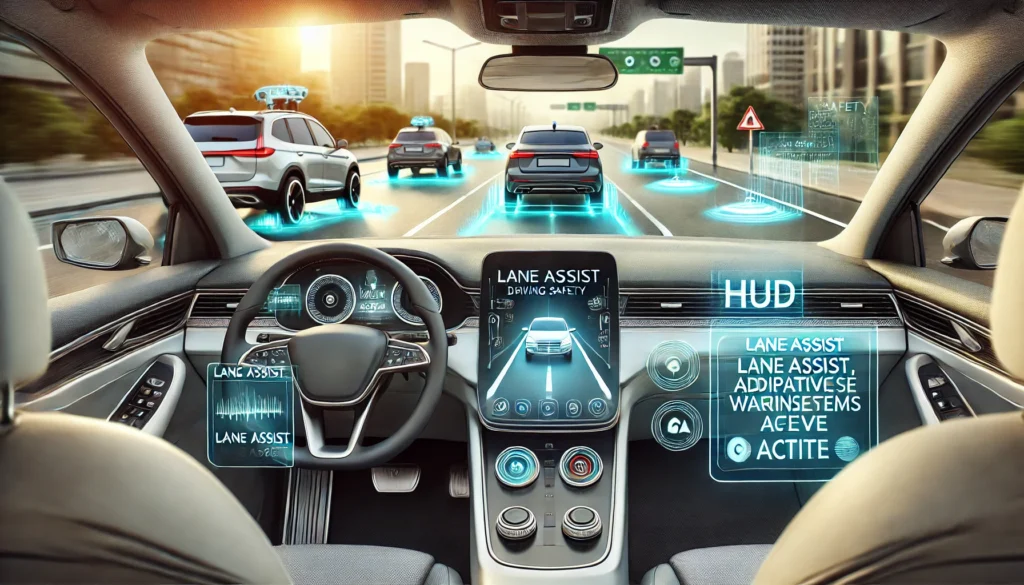
Introduction
Car safety has come a long way from simple seat belts and airbags. Thanks to cutting-edge vehicle technology, modern cars are now equipped with advanced safety features that help prevent accidents and protect passengers. From lane assist systems to fully autonomous vehicles, these innovations are transforming the driving experience. In this blog, we’ll explore the latest technologies that make driving safer and how they benefit you.
1. Adaptive Cruise Control (ACC): A Smarter Way to Maintain Speed
Traditional cruise control maintains a constant speed, but adaptive cruise control (ACC) takes it a step further. It automatically adjusts your speed to maintain a safe distance from the car ahead, reducing the risk of collisions—especially in heavy traffic.
✅ Benefit: Reduces driver fatigue on long journeys and enhances highway safety.
2. Lane Departure Warning & Lane-Keeping Assist: Staying on Track
Drifting out of your lane can lead to serious accidents, but modern cars use lane departure warning (LDW) and lane-keeping assist (LKA) to prevent this.
🔹 Lane Departure Warning (LDW): Alerts the driver when the car unintentionally drifts out of its lane.
🔹 Lane-Keeping Assist (LKA): Gently steers the car back into its lane if no corrective action is taken.
✅ Benefit: Prevents accidental lane changes, reducing the risk of side collisions.
3. Blind Spot Monitoring: Extra Eyes on the Road
Blind spots can make lane changes dangerous, but blind spot monitoring systems use sensors and cameras to detect vehicles in hard-to-see areas. A warning light or sound alerts the driver, making lane changes safer.
✅ Benefit: Minimizes the risk of side-impact collisions.
4. Automatic Emergency Braking (AEB): A Lifesaver in Critical Moments
AEB systems detect an impending collision and automatically apply the brakes if the driver doesn’t react in time. Some advanced systems can even detect pedestrians and cyclists, adding an extra layer of protection.
✅ Benefit: Reduces the severity of crashes and prevents accidents altogether.
5. Rear-View Cameras & Parking Assist: Stress-Free Parking
Reversing accidents are common, but rear-view cameras and parking assist systems help drivers park with confidence. Some vehicles even feature automatic parking, where the car steers itself into a parking space.
✅ Benefit: Prevents fender benders and makes parallel parking effortless.
6. Driver Attention Monitoring: Preventing Drowsy Driving
Fatigue is a major cause of accidents, but modern vehicles now have driver monitoring systems that analyze steering patterns and eye movements to detect drowsiness. If signs of fatigue are detected, the system alerts the driver to take a break.
✅ Benefit: Helps prevent accidents caused by drowsy or distracted driving.
7. Fully Autonomous Cars: The Future of Safe Driving?
The ultimate goal of vehicle safety technology is autonomous driving. While self-driving cars are still in development, many modern vehicles already feature semi-autonomous technology, such as Tesla’s Autopilot and GM’s Super Cruise. These systems can control acceleration, braking, and steering under certain conditions.
✅ Benefit: Potential to eliminate human error, which is the leading cause of accidents.
Conclusion: A Safer Future for All Drivers
From lane assist to autonomous vehicles, car safety technology is evolving rapidly. Whether you’re renting a car or purchasing one, choosing a vehicle with these features can make driving safer and more enjoyable.
🚗 Looking for a rental car with the latest safety technology? Check out our fleet and drive with confidence! Our Car Rental Page